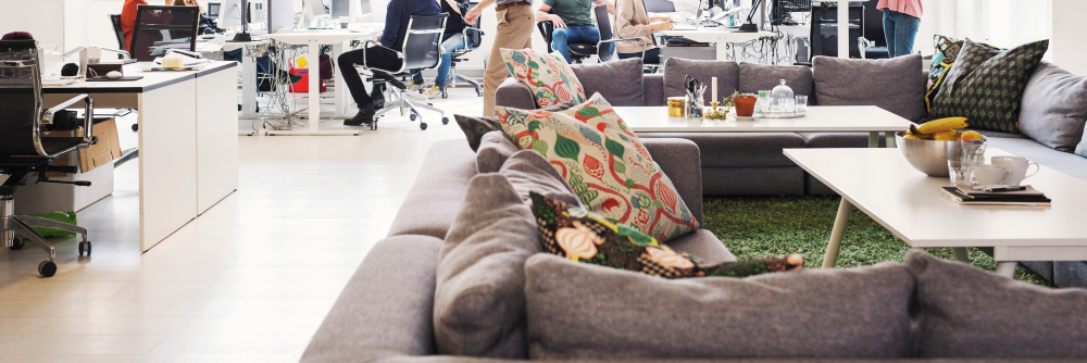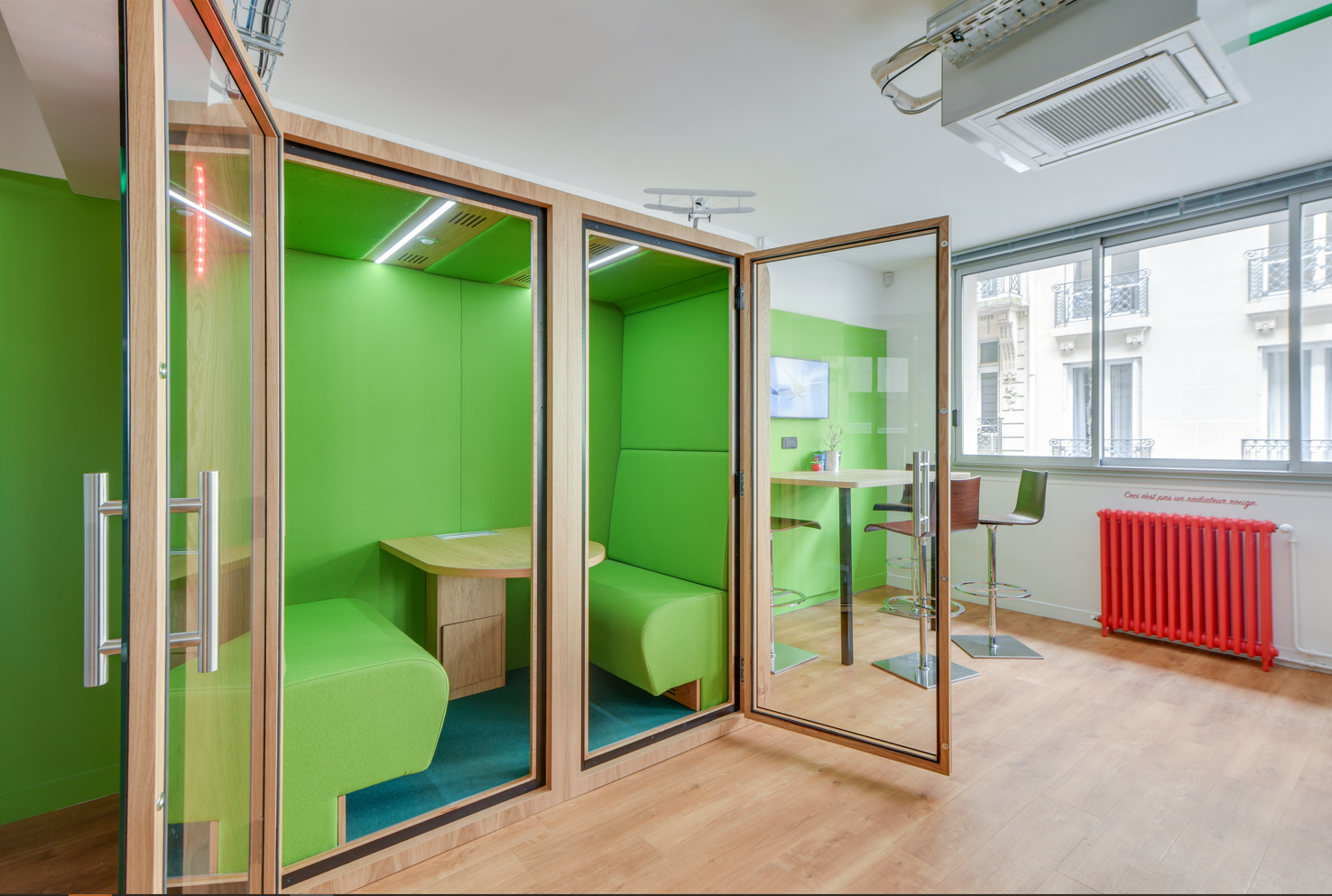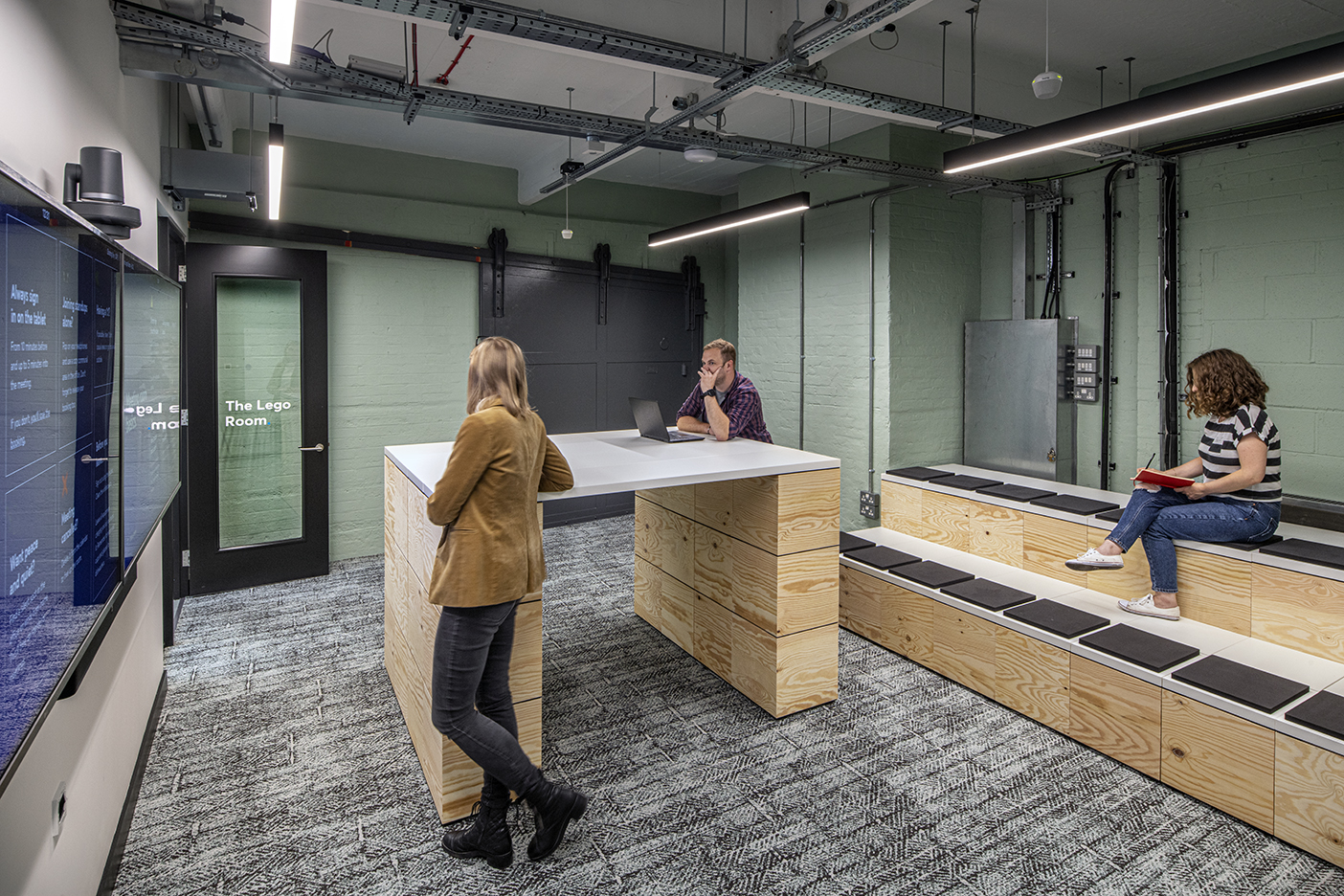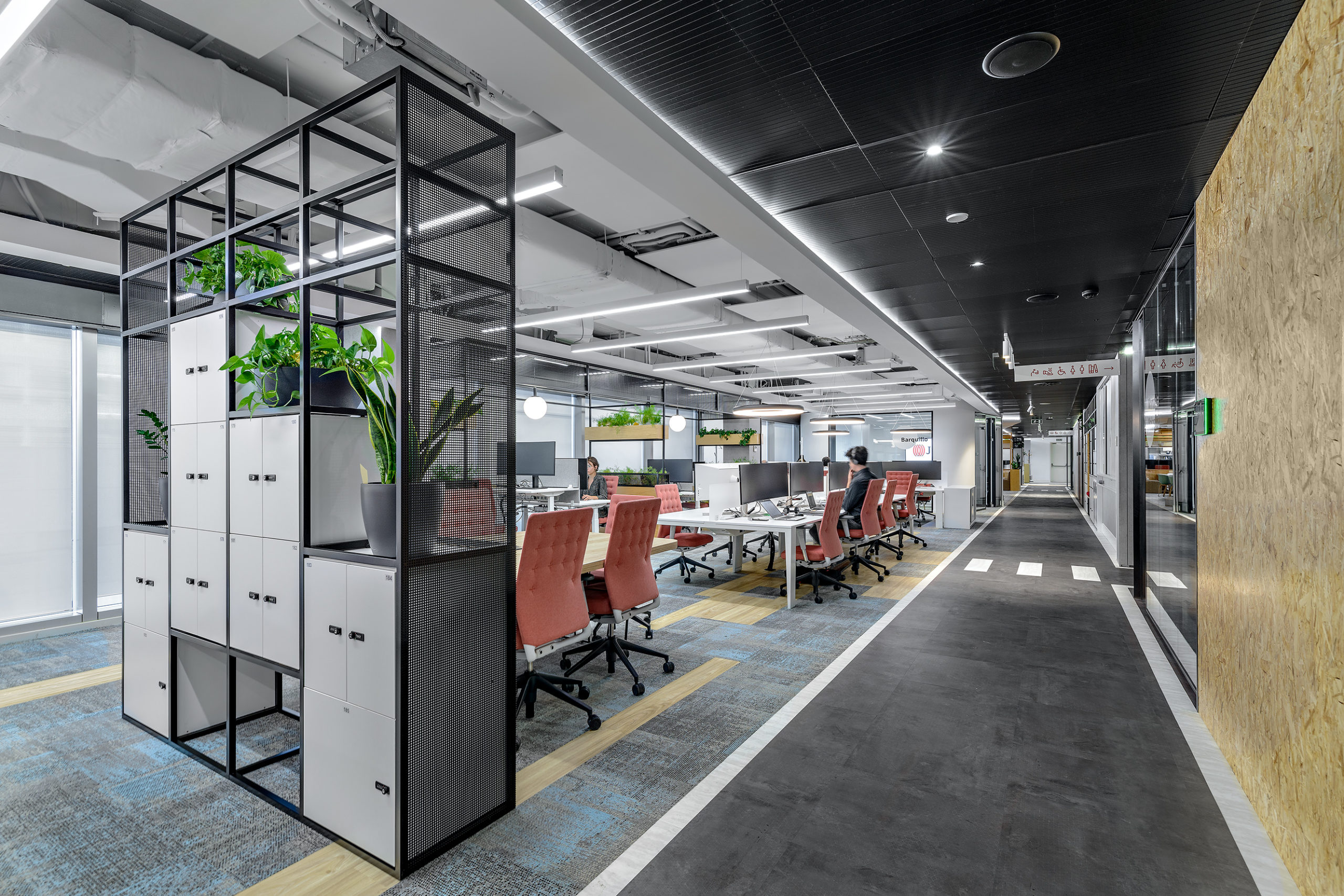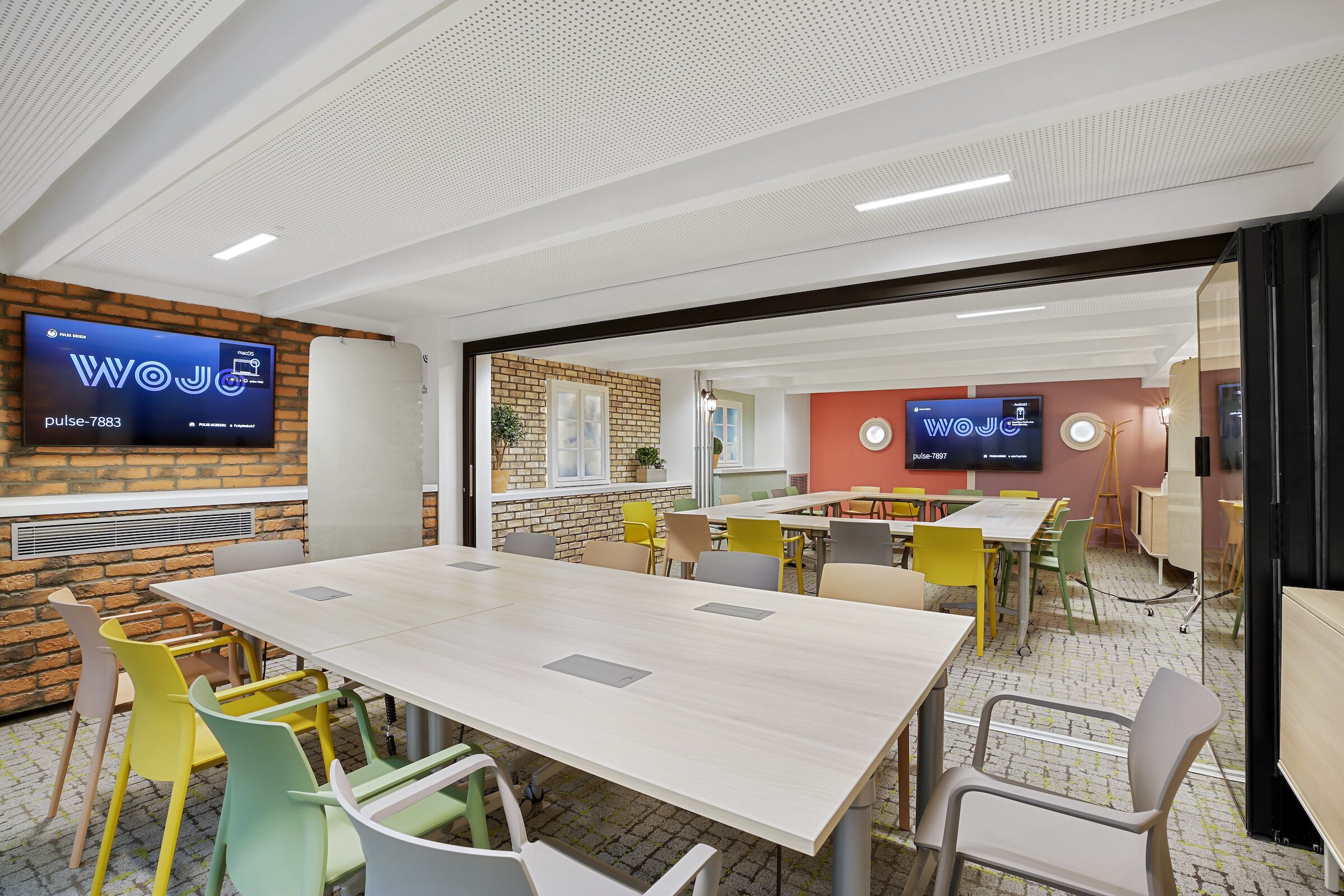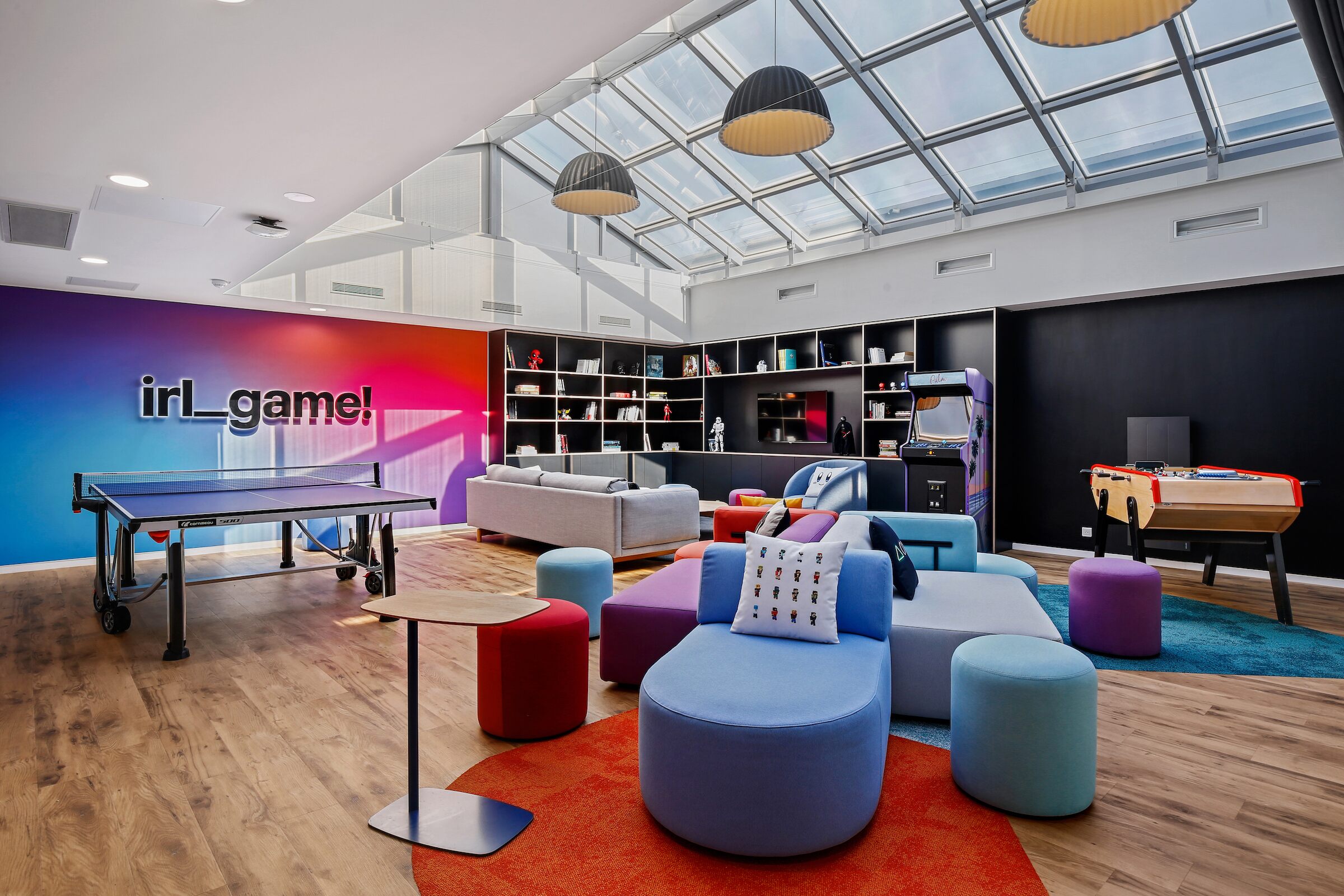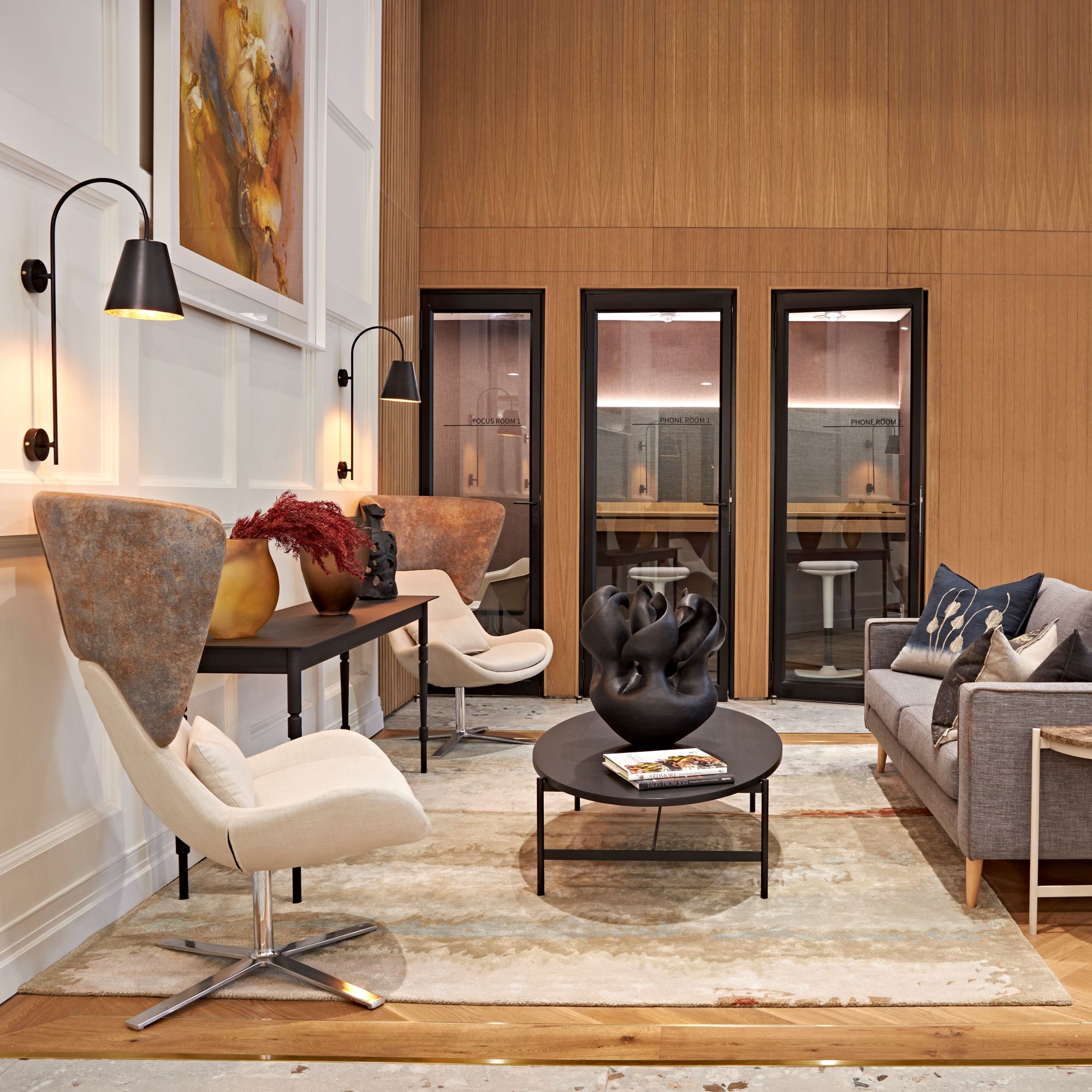From meeting pods to modular desks and seats, furniture can create a collaborative, social workplace that builds community between hybrid working employees
As hybrid work becomes the norm, the office is undergoing a transformation. While many tasks can now be accomplished in the comfort of home or over video meetings, the physical workplace is increasingly valuable as a place to engage employees and build community.
Furniture plays a crucial role in creating an office that meets the needs of modern employees - whether it’s a flexible, collaborative environment for informal work and brainstorming with colleagues, or focus space that may be less readily available at home.
Here’s how furniture helps create an office that supports how today’s employees work.
9 am: Choose an unassigned workstation and connect to the workplace network
In the hybrid workplace where not all staff members are simultaneously in the office, companies don’t need to allocate a desk per employee. Instead, employees can access their digital work environment from any of the office’s unassigned workstations. Desk space can then be reallocated to function as vital collaborative and meeting space.
9:30am: Start a formal meeting in a soundproofed meeting pod
Meeting pods provide private space for meetings of two to eight people, without the need for permanent partitioning in the office. Such pods also isolate any noise from meetings that could disturb people in the open workspace, and support flexible configuration of the office space to more easily accommodate different team sizes and activities.
11am: Go to a high counter for a 10-minute standing meeting
Standing meetings accelerate decision-making, so establishing informal meeting spaces at high counters or small bar tables can be a great option for brainstorms and quick team updates.
11:15am: Return to workstation and adjust for better comfort
Height-adjustable desks with a movable screen support arm allow employees to customise their workstation according to what they need, supporting productivity and focus that may be more elusive in the home office environment. Should a colleague stop by for an informal catchup, the adjustable screen is easily moved to accommodate a shared view.
11:55am: Use stools and acoustic partitions for an ad-hoc meeting space
For longer discussions at their desk, employees can reduce noise distraction by pulling acoustic partitions around their desk space, creating an ad-hoc meeting space while limiting sound that could distract nearby colleagues. Stowaway stools provide a useful solution for brief collaborations at a workstation without requiring dedicated space.
1pm: Head to cafeteria for lunch and opportunities to interact with other departments
Remote work can limit spontaneous interactions between employees. A cafeteria with varied seating and colour zones offers multiple spaces that encourage interaction and impromptu meetings. High counters with bar stools facilitate quick and informal lunches, while sofa seating creates a more social atmosphere for groups.
2:30pm: Join training or workshops in the modular lab space
Modular furniture sets with reconnectable tables, seats, connection sockets, partitions and whiteboards provide multifunctional space that accommodates various activities.
The use of different seating heights also encourages different work modes. For example, low seats support more convivial team discussions, while partitions can create ad-hoc space for solo or small group focus. Whiteboards and stowaway seats can be used to quickly create brainstorming or presentation space. By accommodating multiple solutions in a single space, modular furniture optimises space utility while fostering teamwork and a dynamic environment.
4pm: Relax and rejuvenate in lounge-like space
Comfortable, casual furnishing such as poufs, armchairs and soft rugs recreate home-like comforts in the workplace, inviting employees to recharge while connecting with colleagues. Collaborative games, such as table football, add an element of play that can boost productivity and engagement through the day.
4:30pm: Take a confidential video meeting in a soundproof phonebooth
Single-person pods equipped with a chair, side table and laptop connections provide a distraction-free environment for a confidential phone or video call.
5pm: Participate in mentorship or recruitment meetings
Face-to-face meetings are a vital benefit of the physical workplace, facilitated by cosy armchairs and a coffee table that lowers the barriers between people and encourages more fluid interactions that build community.
Sustainable and social
In reimagining the office to better support collaboration and community, companies should consider the rising priority that employees and other businesses place on sustainability.
Repurposing existing furniture or choosing secondhand pieces can help reduce the carbon impact of the office changes, while furniture made according to circular design principles will be more easily reused or recycled at the end of its lifespan. By incorporating sustainability into the office, companies not only meet environmental goals but also improve their ability to attract and retain talent.
Striking a balance between flexibility, comfort and sustainability in office design helps companies adapt to evolving work needs. This holistic approach supports the new demands of the hybrid workplace and helps create an engaging and future-proof work environment.
At Tétris, our dedicated furniture team specialise in curating and sourcing furniture that meets new workday needs and checks off on critical sustainability criteria.

